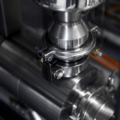Semiconductors have made national headlines in the past two years. The COVID-19 pandemic and its domino effect on global supply chains have caused shortages that impacted a multitude of industries. At the same time, frequent mergers and acquisitions of semiconductor manufacturers have worsened one of the industry’s biggest problems — obsolescence. In this article, Neil Ballinger, head of EMEA at global automation parts supplier EU Automation, examines why semiconductors are becoming obsolete faster than in the past, and how to cope.
Semiconductor shortages are impacting consumers’ ability to purchase not only the latest mobile and computer tech, but also automobiles, white goods, and even LED lights. However, despite their importance in the production of everyday items, obsolescence is still becoming a growing issue for semiconductors.
The increasing pace of obsolescence
In 1970, the typical lifecycle of a semiconductor was expected to be about 30 years. By 2014, this was reduced to ten years — a 60 per cent reduction in less than 50 years. This isn’t a huge problem for consumer electronics, with new smartphones and laptops being released every six months or so.
However, the shorter lifecycle of components can pose a significant challenge for industrial machinery that is expected to last for decades. In particular, highly-regulated fields such as automotive, aerospace, defence and medical device manufacturing are strongly impacted by fast semiconductor obsolescence. In these sectors, using a different component than the one specified in the original design can lead to extensive and time-consuming testing and verification procedures.
But why are semiconductors becoming obsolete faster than in the past? Partly, this is due to the natural pace of technological progress, which leads semiconductor manufacturers to phase out older models to make space for more efficient and cost-effective alternatives. Also, older models are normally embedded in legacy devices, which can depreciate so much that continuous support by the original equipment manufacturer (OEM) is not convenient.
However, since the start of the COVID-19 pandemic, another phenomenon has contributed to the fast pace of semiconductor obsolescence — a big round of suppliers’ mergers and acquisitions. For example, in 2021, Chinese-owned Nexperia acquired NWF, the UK’s largest chip plant. In the same year, Renesas acquired Dialog Semiconductor, almost simultaneously to ADI acquiring Maxim Integrated.
When this happens, the purchasing company may decide to streamline the product portfolio of the company it acquired, phasing out semiconductors that are less in demand to prioritize the manufacturing of newer models. This trend further increases the volatility of the already fragile semiconductor supply chain.
How to cope?
When a product reaches its end of life (EOL), OEMs issue a last time buy (LTB) notice. This usually gives manufacturers between six and twelve months to buy and stockpile components before they are discontinued. However, LTB typically does not guarantee that all manufacturers using that device will be able to place and receive an order in time. So, what can be done?
First of all, keeping up-to-date with industry changes, mergers and acquisitions can help manufacturers predict which components are more likely to be discontinued. To help with that, EU Automation regularly announces when popular components are becoming EOL, both in a newsletter and on social media.
It’s also imperative that manufacturers are aware of the obsolescence risk of semiconductors that are embedded in mission-critical equipment, and that they track the life stage and health condition of such machinery with an adequate predictive maintenance program. This will allow them to spot potential failures before they cause irreparable damage, and to order hard-to-find spare parts before anyone else. A trustworthy supplier that specialises in obsolete spare parts can also be a great resource and can help manufacturers source quality spare parts from a global network of qualified partners.
These strategies will not prevent semiconductors from becoming obsolete, but they might help offset the negative repercussions of obsolescence on business’ bottom lines.
For a quick, hassle-free quote on a huge variety of quality automation parts, visit www.euautomation.com/uk.








